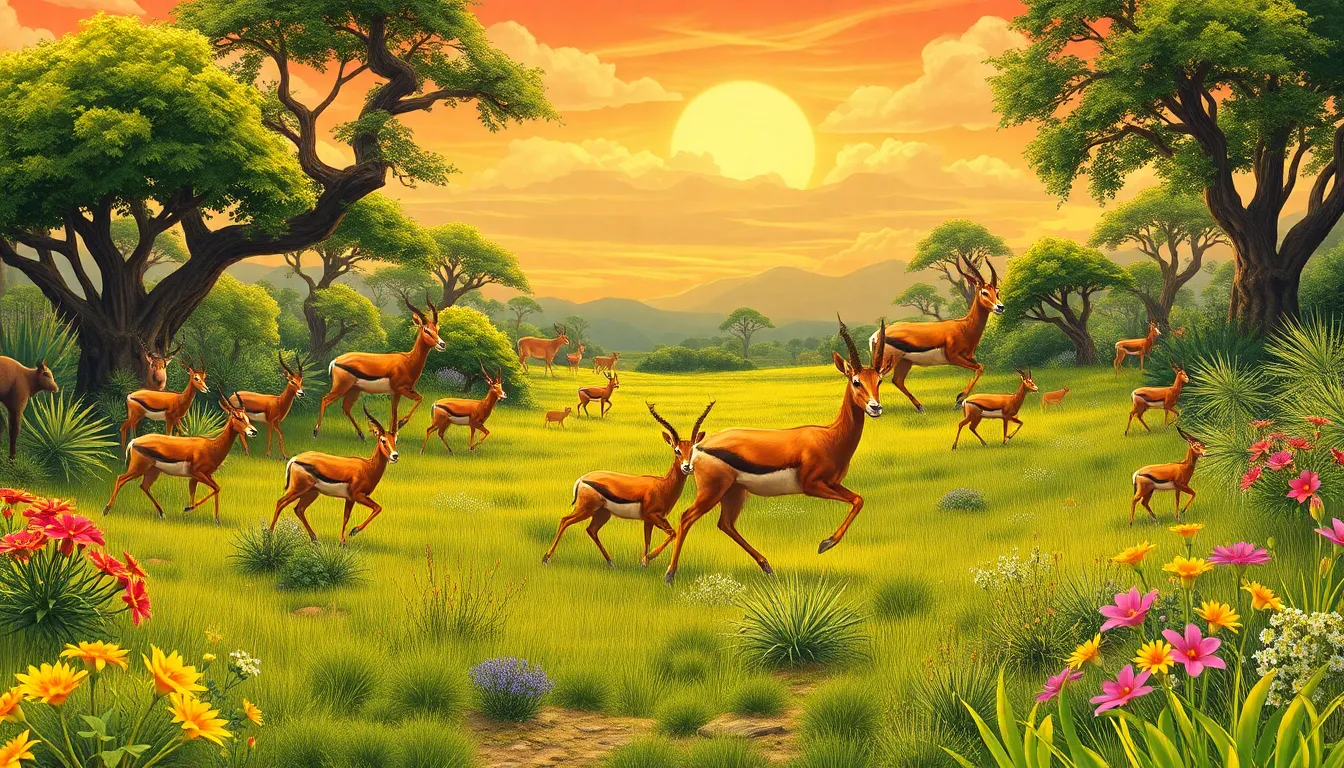In a world where innovation often seems to outpace nature, one might wonder if the original designer had the best ideas all along. From the intricate web of a spider to the awe-inspiring flight of a bird, nature’s blueprints have evolved over millions of years, proving that sometimes the best solutions come from the wild. It’s like Mother Nature has her own version of a think tank—minus the suits and PowerPoint presentations.
Imagine if we could harness that wisdom in our everyday lives. What if the secrets to sustainability, efficiency, and even style were right under our noses, waiting to be discovered? Join the journey as we explore how nature’s genius can inspire everything from technology to personal well-being, reminding us that sometimes, the most brilliant ideas are those that have already been perfected by evolution.
Evolved By Nature
Evolved By Nature emphasizes the intelligence embedded within natural processes. Nature’s evolution offers models that scientists and innovators can study to solve contemporary problems effectively. Many designs, like a spider’s web, showcase intricate engineering that withstands immense pressure and stress. Bird flight provides another example, revealing sophisticated aerodynamic principles that inspire modern aircraft designs.
The concept extends beyond mere imitation. Biomimicry involves adapting natural solutions to human challenges, focusing on sustainability and efficiency. Technologies inspired by nature emerged as eco-friendly alternatives, significantly enhancing product development across diverse industries.
Materials such as gecko feet inspire adhesives, while lotus leaves lead to innovations in self-cleaning surfaces. Observing ecosystems reveals methods for waste reduction and resource management. Solutions that nature has perfected can provide insights into energy efficiency and renewable resources.
Various applications demonstrate how evolved principles manifest in everyday life. Solar panels mimic leaf structures, optimizing sunlight absorption. Water filtration systems often draw inspiration from natural purification processes found in rivers and wetlands.
By aligning human ingenuity with nature’s designs, industries can create sustainable practices that resonate with ecological balance. This symbiotic relationship fosters a mindset that prioritizes ecological stewardship. Evolved By Nature encapsulates a vision where harmony between innovation and the environment leads to a more sustainable future.
The Science Behind Evolution

Understanding evolution provides insight into nature’s incredible designs. Two essential processes drive evolution: natural selection and genetic variation.
Natural Selection
Natural selection describes how species adapt over time. Favorable traits enhance survival and reproduction, allowing individuals with these traits to pass them on. This process happens in various environments, influencing species diversity. For example, faster gazelles survive predation better than slower ones. Over generations, this leads to a higher proportion of faster individuals. Adaptations can manifest in physical characteristics, behaviors, or reproductive strategies, all shaped by environmental pressures. Evidence from fossil records and modern species supports the theory that natural selection plays a crucial role in shaping life on Earth.
Genetic Variation
Genetic variation explains how differences among individuals arise. It results from mutations, gene flow, and sexual reproduction. These variations create a pool of traits for natural selection to act upon. Without genetic diversity, populations struggle to adapt to changes. For instance, a plant species with varied flower colors may attract a wider range of pollinators. Consequently, this enhances its chances of reproduction and survival. Furthermore, understanding genetic variation helps scientists develop strategies for biodiversity conservation. Research into genetic differences among species reveals how populations can respond to environmental changes, ensuring resilience over time.
Examples of Evolved By Nature
Nature’s innovations serve as blueprints for human technology, demonstrating the effectiveness of evolved solutions. Observing adaptations across various species reveals key insights into sustainable practices.
Adaptations in Animals
Camouflage allows predators and prey to thrive. Chameleons change color to blend with their environments, enhancing survival. The remarkable speed of cheetahs showcases adaptations for hunting, enabling them to achieve speeds up to 75 miles per hour. Additionally, the migratory patterns of birds, such as Arctic terns, highlight the importance of navigation and energy efficiency over long distances. Insects like termites display social cooperation in building complex nests. These features enhance resilience and efficiency, showcasing nature’s time-tested strategies.
Responses in Plant Life
Plants exhibit extraordinary adaptations to their surroundings. Cacti store water, enabling survival in arid conditions. The Venus flytrap showcases unique mechanisms to capture prey, reflecting nutrient acquisition strategies. Additionally, certain trees develop thick bark to withstand wildfires, demonstrating resilience to environmental changes. The rapid growth of bamboo highlights adaptability in resource competition. These plant responses inspire innovations in water conservation, materials science, and ecosystem management, illustrating nature’s wisdom in action.
The Role of Environment in Evolution
Environment plays a crucial role in the evolution of species. Factors such as climate, available resources, and predation directly influence survival. Species adapt in response to environmental pressures, leading to variations that enhance their chances of survival and reproduction. For instance, drought conditions may drive the development of deeper root systems in plants, enabling access to scarce water supplies.
Temperature fluctuations create selective pressures that can enhance traits such as insulation or coloration. Arctic foxes develop thicker fur in colder climates, while lizards in warmer regions may adapt lighter skin for better thermoregulation. Local food sources also shape evolutionary outcomes, as seen with the beaks of finches that evolve to efficiently access different types of seeds.
Changes in habitat due to human activity can significantly impact the course of evolution. Urbanization leads to altered ecosystems, challenging species to adapt rapidly or risk extinction. Research shows that some birds modify their songs to be heard over city noise, demonstrating impressive adaptability. The ability to thrive despite these changes highlights the dynamic relationship between environment and evolutionary success.
Studying these adaptations provides insight into the resilience of biodiversity. Conservation efforts often focus on preserving habitats to maintain the genetic diversity essential for species survival. Protecting ecosystems allows for natural selection to continue dictating the evolution of species, ensuring they can respond to future environmental shifts.
Understanding the interplay between environment and evolution emphasizes the importance of ecological preservation. Comprehending evolutionary processes aids in recognizing how species respond to challenges. Future innovations inspired by these natural adaptations rely on the continual study of evolving organisms in their environments. Therefore, safeguarding natural habitats becomes vital for both biodiversity and human advancement.
Conclusion
Embracing nature’s innovations can lead to transformative solutions for today’s challenges. The intelligence found in natural processes offers a wealth of inspiration that can guide sustainable practices and technological advancements. By looking to the environment for answers, individuals and industries can foster a deeper connection with nature while enhancing their efficiency and creativity.
This approach not only promotes ecological stewardship but also encourages a future where human ingenuity aligns with the wisdom of evolution. As the world faces pressing issues, harnessing the power of nature’s designs can pave the way for a more sustainable and innovative tomorrow.

